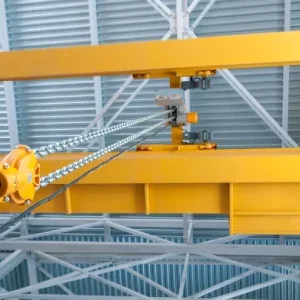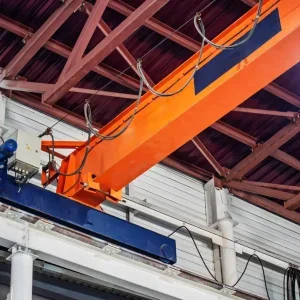The reconstructed Reichstag building, past and near-future home of the German parliament in Berlin, was handed over on 19 April, amid much ceremony, to the government by the British architect Sir Norman Foster who designed the changes to the historic 105-year-old building.
Politicians within the debating chamber of the lower house will face a giant German federal eagle, newly-made of high grade steel steel and designed by Foster and Ludwig Gries. The heraldic emblem of the Federal Republic hangs freely on the wall rather than secured to it.
It was in the fabrication of this structure that Mannesmann Dematic had a small but important role, and so can lay claim to a – literally – tenuous mention in the historical records.
The eagle, which has a wing span of 8.5m, was fabricated by a mechanical engineering company in Westphalia, using a single girder Demag crane to complete the work.
The politicians will remain in Bonn for several months to prepare for their move back to Berlin after an absence of more than 50 years. Not until 6 September is the Reichstag due to re-open for business.
Holding the eagle was not the extent of Mannesmann Dematic’s involvement in the DM600m ($325m) reconstruction project, the design and cost of which continue to generate controversy.
Central to the design is a visually-striking transparent dome over the building that lets natural light into the chamber, thus helping to save energy. It also acts as a public viewing gallery.
A 20t ring-shaped awning inside the dome moves around to follow the path of the sun. This awning runs on 144 Mannesman Dematic RS 160 wheelblocks, more commonly found in industrial factory crane applications and is controlled by 24 offset gears and an inverter – “a successful synthesis of architecture and technology”, says Mannesmann Dematic. n






